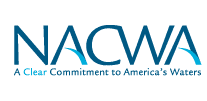Clean Water Advocacy - Newsroom - AMSA in the News
Falls Church News-Press
A Penny For Your Thoughts
Penny Gross; Fairfax County Board of Supervisors
Whether you call it sewage or wastewater, the stuff that gets flushed down our
kitchen, bathroom, and laundry drains has to go somewhere. That “somewhere”
usually is a municipal plant that operates 24 hours a day, seven days a week
with the help of highly trained and skilled wastewater professionals who oversee
a series of complex and sophisticated physical, mechanical, biological, and
chemical treatment processes for removing 99 percent or more of pollutants,
nutrients, and particulate matter from the wastewater before it is discharged
back into a water body.
In Fairfax County, the Noman M. Cole, Jr. Pollution Control Plant handled nearly
half the 100 million gallons per day of wastewater generated by county residents
and businesses. The plant, on Richmond Highway in southern Fairfax County,
recently received the Gold Peak Performance Award from the Association of
Metropolitan Sewerage Agencies. The award recognizes the facility’s outstanding
accomplishments in wastewater treatment and environmental protection of water
quality in the county, as well as improvement of water quality in the Chesapeake
Bay. Last year, the plant received the Platinum Peak Performance award, which
recognized five consecutive years of Gold Awards.
Wastewater treatment plants must comply with Clean Water Act regulations, and
they operate under an Environmental Protection Agency (EPA) permit program
called the National Pollutant Discharge Elimination System (NPDES). The program
controls water pollution by regulating point sources (conveyances such as pipes)
that discharge treated wastewater effluent into waters of the United States. The
Noman Cole plant discharges effluent into Pohick Creek, which empties into the
Potomac River, which empties into the Chesapeake Bay. The water discharged into
the Potomac actually is cleaner than when it was originally removed from the
Potomac several miles upstream for treatment as drinking water by the Fairfax
County Water Authority permit.
Fairfax County’s Wastewater Management Program maintains about 3,200 miles of
sanitary sewer lines and 61 pumping stations in an approved sewer area that
covers nearly 234 square miles. More than 85 percent of households and virtually
all businesses in the county are connected to public sewer. Other regional
treatment facilities are operated by Arlington County, and Alexandria Sanitation
Authority, the District of Columbia (Blue Plains), and the Upper Occoquan Sewage
Authority. A portion of the wastewater flow collected in the Fairfax system is
conveyed to these facilities through inter-jurisdictional agreements.
As we all strive to clean up the Chesapeake Bay and improve water quality for
the 64,000 square mile watershed, wastewater treatment plants are leading the
effort to reduce nutrients such as nitrogen and phosphorus from point sources.
As technology improves, wastewater treatment plants can do a better job, but
there is a cost. Meeting new standards set by EPA and the permit process,
installing new and more sophisticated equipment, and finding ways to pay for it
are challenges facing local government officials, the technical experts, and the
ratepayers. Federal and state assistance will be required to meet those
challenges. Think about that the next time you turn on a faucet, run the
dishwasher, or flush the toilet.



